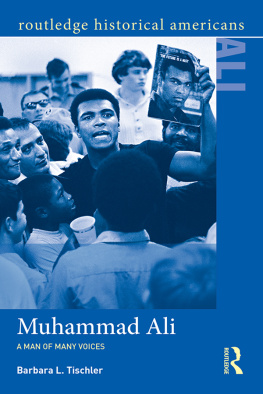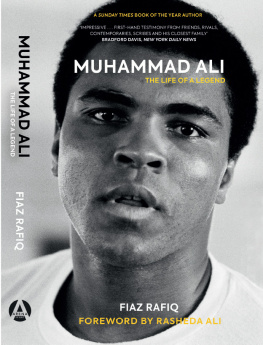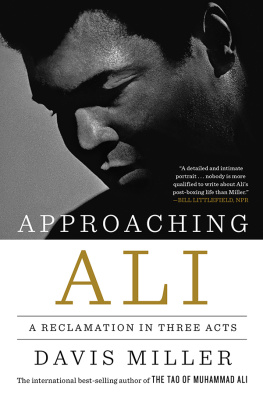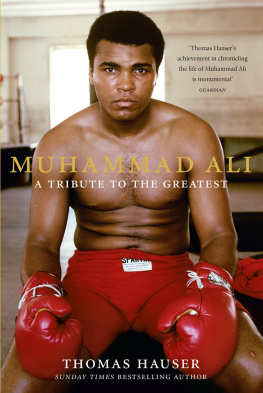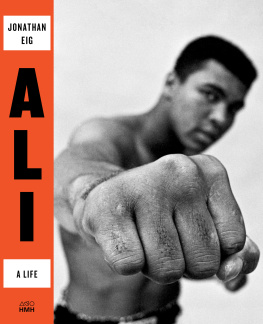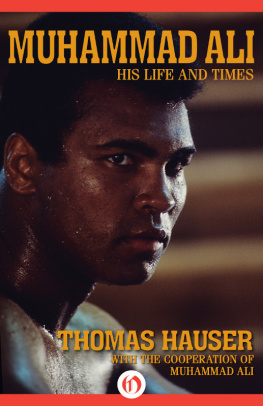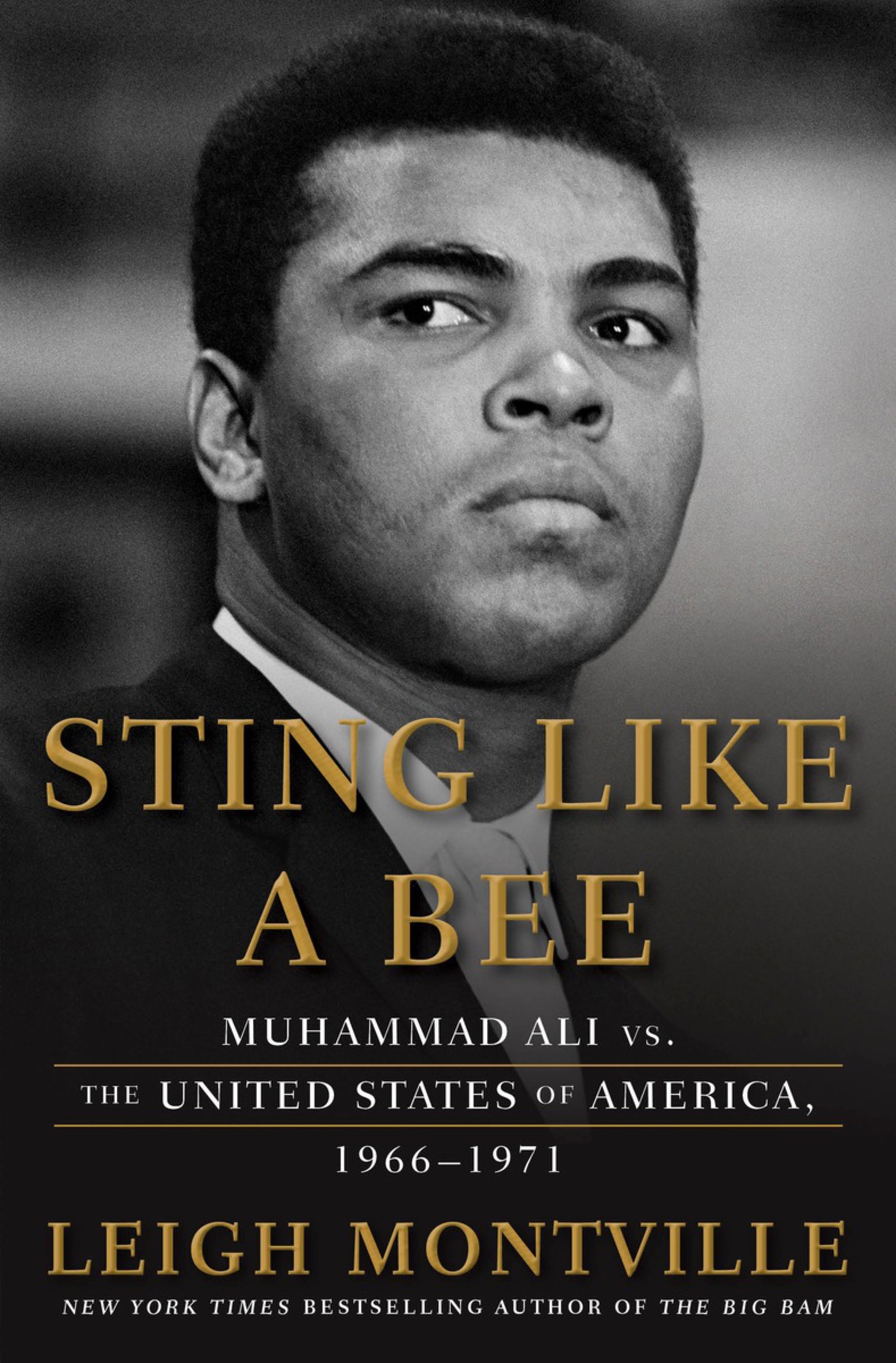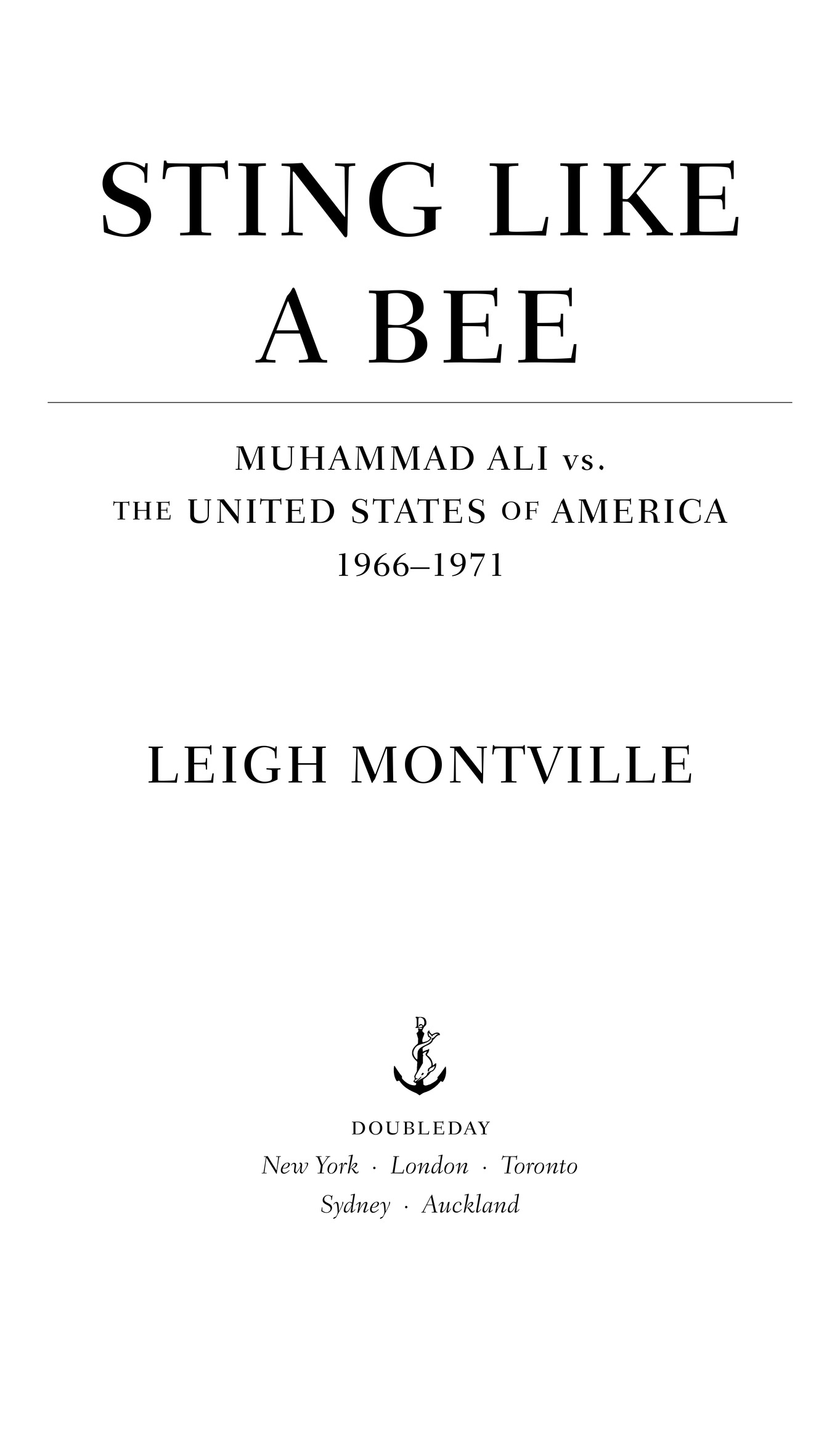All rights reserved. Published in the United States by Doubleday, a division of Penguin Random House LLC, New York, and distributed in Canada by Random House of Canada, a division of Penguin Random House Canada Limited, Toronto.
DOUBLEDAY and the portrayal of an anchor with a dolphin are registered trademarks of Penguin Random House LLC.
Names: Montville, Leigh, author.
Title: Sting Like a Bee : Muhammad Ali vs. the United States of America,
19661971 / Leigh Montville.
Description: First edition. | New York : Doubleday, 2017.
Identifiers: LCCN 2016056528 | ISBN 9780385536059 (hardback) | ISBN 9780385536066 (ebook)
Subjects: LCSH: Ali, Muhammad, 19422016. | African American boxersUnited
StatesBiography. | Boxers (Sports)United StatesBiography. | African
American MuslimsBiography. | Vietnam War, 19611975Conscientious
objectorsUnited States. | BISAC: SPORTS & RECREATION / Boxing. |
BIOGRAPHY & AUTOBIOGRAPHY / Political.
Classification: LCC GV1132.A44 M66 2017 | DDC 796.83092 [B]dc23 LC record available at https://lccn.loc.gov/2016056528
Introduction
T he hearse was a Cadillac, black and long and shiny, which figured because Muhammad Ali always was a Cadillac man. The first money he ever spent as a professional boxer went to West Broadway Motors in downtown Louisville to buy his mother a pink Eldorado. The second money went to buy an Eldorado for himself.
He roared through a string of Cadillacs in his early life, one replacing the other. He liked them flashy, too. He had one Cadillac that contained two phones so he could call two people at once if he wanted. A Cadillac was a sign of success. Wasnt it? He showed up one day in Chicago with a new Cadillac low rider that was so flashy a friend told him it was embarrassing just to travel with him.
You should be in a classier ride, the friend suggested. A Rolls or a Bentley.
Whats a Bentley? the heavyweight champion of the world asked.
This final Cadillac was a 2016 XTS, which had been modified into a hearse somewhere in Ohio. The driver was thirty-three-year-old Chase Porter, whose family owns A. D. Porter & Sons, the funeral home that also buried Alis mother and father. Ron Price, another funeral home employee, rode shotgun. Muhammad rode in the back in a $25,000 mahogany box.
The dayJune 10, 2016was filled with schedules and grand moments and famous people. The hearse would take a trip of slightly over twenty-three miles to cover a ceremonial route that would include a couple of highways and then travel down Muhammad Ali Boulevard, which once was Walnut Street. It would go past the Andrew Young Center, which is very close to the Muhammad Ali Center, past the Beecher Terrace housing complex and past Central High School and past the Kentucky Center for African American Heritage and past 3302 Grand Avenue, Muhammad Alis boyhood home, which has been restored as a museum. The procession would continue past all kinds of memories, big and small, would accompany the famous man straight down Broadway past various public buildings that were important in his life. The finish would be Cave Hill Cemetery.
Former heavyweight champions Mike Tyson and Lennox Lewis and actor Will Smith, who played Ali in a movie, would be among the pallbearers at the private graveside service. A public memorial then would be held at a fifteen-thousand-seat arena named after a string of fried chicken restaurants, the KFC Yum! Center, maybe the first memorial service ever held in a building with an exclamation point in the middle of its name. Tickets for this event had disappeared in the blink of a civic eye, every seat filled. Former president Bill Clinton, comedian Billy Crystal, and news host Bryant Gumbel would be among the speakers. Senior advisor Valerie Jarrett would read a statement from President Barack Obama, who had to attend his daughters high school graduation in Washington, D.C.
ESPN and TV One and Bounce TV all would carry the proceedings live. Millions would watch. Millions more, maybe billions around the world, would see at least a part of what took place on news reports. People in Louisville would stand and stare, laugh and cheer, maybe cry a little bit as the procession passed. Flowers would be thrown. Affection would be public and unforced.
This was the send-off from this mortal coil that a head of state would receive. The funeral of a top-level movie star, a pop singer, might contain some of the same elements. Michael Jackson came to mind. A boxer had it here. A boxer. There hadnt been a funeral for an athlete in America this big probably since the one for Babe Ruth, who lay in state for two days and nights at Yankee Stadium in 1948. This was special. This was different. This was Muhammad Ali.
The first rose landed on the windshield of the 2016 Cadillac XTS almost as soon as the procession began. Chase Porter tried to sweep it off with his windshield wipers. A streak was spread across the glass. Roses would be a problem for the entire trip.
Windshield wipers arent to remove flowers, Porter said later to the writer from the New York Times.
The New York Times.
This was not about a boxer at all.
This was much bigger than that.
He was not an extremely old man when he died, seventy-four, same age as Bernie Sanders, who still was running for president, but it seemed as if Muhammad Ali had been old for a long, long time. Disease does that. He had begun to be compromised in the last two fights of his career. He was thirty-nine when he retired. That meant he had been sick, getting sicker, for more than thirty-five years.
The Parkinsons disease gave him a tremor, a shake, that only grew worse with time. His movements became more and more restricted until the last few years when he hardly could move at all. The slur in his voice became worse and worse until he could not talk.
The only part that grew larger, better, was his aura.
There was no stopping his aura.
Sweet Jesus, there wasnt.
The years passed and he became a secular saint. He was a postmodern Mother Teresa, shuttled around the world to minister to the masses. He lit the torch at the 1996 Summer Olympics in Atlanta, and there were quiet sighs mixed with cheers in every time zone on earth. He negotiated with despots to free hostages, didnt even have to say a word; just his presence was a convincing argument. He was a symbol of unity and possibility.
Everyone can get along. That was the unspoken message assigned to him in his later years. He was the black man who didnt disrupt the most segregated neighborhood. He was the Muslim who didnt want to blow up anything except injustice. There was a universal acceptability to him. Is that the word? Acceptability? He was a night light in what often seemed to be a very dark room.



